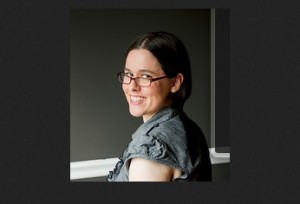by Ruth Kitchin Tillman, former Head Editor, INALJ Maryland
previously published 11/13/13
Making Library School’s Dirty Little Secret Work for You
 As I finish my final semester of library school and talk to others new to the profession, I realize that library school is hiding a dirty little secret: It’ll teach you a little about a lot of things.
As I finish my final semester of library school and talk to others new to the profession, I realize that library school is hiding a dirty little secret: It’ll teach you a little about a lot of things.
While a few teachers have taught brilliantly-iterative classes, like Arrangement and Description’s slow-build to create a finding aid, most classes are basically surveys. Last year, I ranted to my boss that I didn’t feel like I was really learning anything in library school. But then I back-pedaled because what I’m learning is that things exist. And I’ve been using that knowledge, since the beginning of my program, to teach myself things that make me feel like I’ll actually deserve the title of “Master” in December.
So, how do you make this work for you? How do graduate knowing more than just a little about a lot?
Use the survey courses to find what really interests you.
In my Organization of Information class, way back in fall of 2011, our teacher spent part of a class talking about EAD and mentioned that there was a tool called Archivists’ Toolkit which would allow you to create it. That’s it. That’s all I’ve gotten about AT in my entire time here (although I’m told that in my 5th-week-from-the-end-of-library-school I may be seeing it actually used in class tonight). This piqued my interest as I realized that it sounded like a useful tool for my future career.
Find a partner or a team.
Several other archives students in the class met up that night and agreed that we wanted to learn more about it. We decided to work together on a class project to teach ourselves the very basics of how it worked. By working on it together, we were able to help each other out when team members ran into issues.
Enlist help from the field.
We wanted to see how Archivists’ Toolkit stored data before creating our own data. So we asked a very helpful UMD metadata specialist if she’d be willing to share one of the university’s raw EAD finding aids with us. In the email, we articulated exactly what we wanted to do and why it’d be helpful to have a finding aid. We didn’t want to waste her time.
Keep going outside of class.
When you can, make class projects work for you as self-teaching opportunities. Your professor may or may not be able to help (in our case, ours had no experience with it so we were on our own), but if you work together, you can learn a great deal. But then keep going outside of class. Maybe with your partners, maybe on your own. In my case, our Archivists’ Toolkit project and comparing the EAD exports led me to create EADiva, where I replicated the Library of Congress tag library in a format easier for students to use. Not only was it a resource for others, but the project was a great opportunity for me to teach myself about EAD.
Your projects needn’t be big. If you think your reference class hasn’t taught you enough about handling patron database searches, ask your friends for random research topics and find them pertinent articles. While you’re in library school, you should have plenty of access to databases. If you’re concerned about trying to teach yourself how to use Archivists’ Toolkit, import one of the sample files on EADiva into a local sandbox installation and compare the EAD elements in the XML file with the fields in the software. Then view a repository’s public finding aid and try replicating it in Archivists’ Toolkit.
Whether you end up with a sheet of paper or a set of skills at the end of your Master’s program is pretty much up to you.
3 comments for “Making Library School’s Dirty Little Secret Work for You”